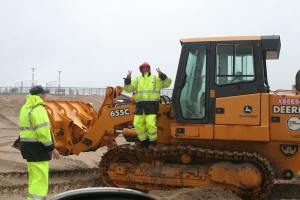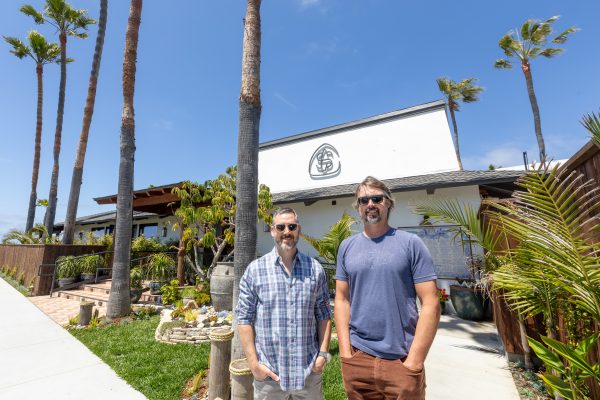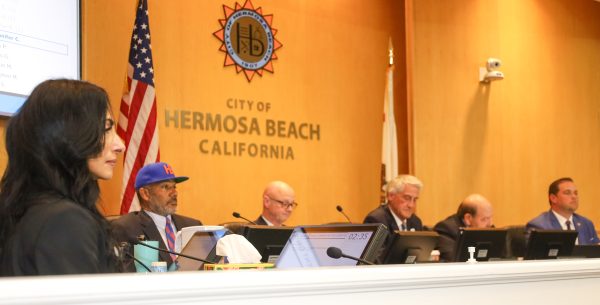As a series of storms pounded the South Bay, city workers once again concentrated their attention on keeping open the large outfall pipes that carry rivers of rainwater from the roads to the beach.
“There’s a lot of rain, but we’re keeping up with it,” said Public Works Superintendent Mike Flaherty as he crisscrossed the town in his white municipal pickup truck Monday afternoon, monitoring the outfall work and surveying low-lying parts of town, where heavy rains often cause some flooding in residents’ homes.
“Beach Drive isn’t flooding,” Flaherty noted with pleasure as he rolled passed the narrow, low-lying road that runs parallel to The Strand.
Flaherty said some flooding would likely occur during the week of rain, but as of 1:30 p.m. Monday none had been reported.
Over the previous four days, Hermosans had trouped to City Hall to pick up 20 cubic yards of sand and about 3,000 sandbags to dam the coming waters. In addition Flaherty and his crews stood ready with 300 to 400 pre-filled sandbags to respond to residential flooding.
But, he said, the key to overall Hermosa storm-flood protection is to keep open the big drainpipes that carry the water to the beach.
At high tide, about once every 12 hours, the surf and the rainwater can combine to push sand into the mouth of the pipes, clogging them and backing the rainwater up into town. So about high tide time, Eric Wilcosky of Flaherty’s department pilots a big John Deere crawler loader down the beach to unclog the drains.
As Flaherty drove his truck along the sand, inspecting all 11 outfalls, he stopped at an especially big one off 16th Street where about a third of the city’s storm water roars from the pipe’s rectangular mouth, which measures about six feet by four feet.
“This is like a river,” Flaherty said.
He described Wilcosky’s method for unclogging the 16th Street pipe:
“He gets in front of it, opens it up, and gets the heck out of the way.”
As pounding rain was joined by pounding surf, the city pier was closed Tuesday afternoon amid high waves. ER











